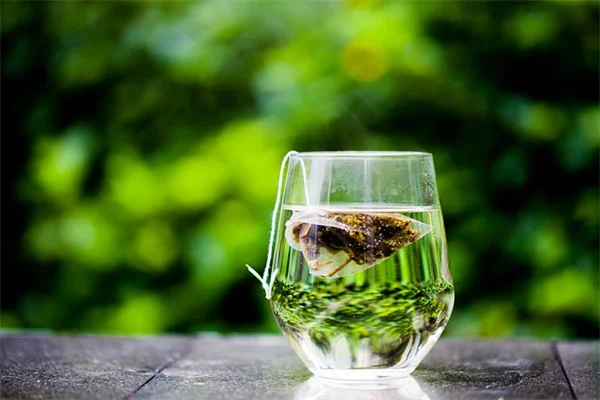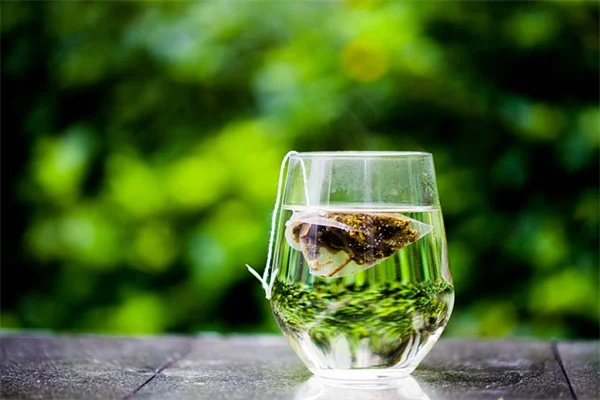Are you looking for a salmon recipe for brain health? You’re in the right place! The answer is yes, incorporating salmon into your diet can significantly boost your brain function. With its rich omega-3 fatty acids, particularly DHA, salmon is not just delicious but also a powerhouse for your brain. I’ve personally felt the difference in my focus and memory after including more salmon in my meals. In this article, we’ll explore why salmon is considered the ultimate brain-boosting superfood, share some quick and easy recipes, and discuss the best cooking methods to retain all those amazing nutrients. Let’s dive in and discover how you can make salmon a regular part of your healthy eating routine! 🐟✨
E.g. :Unlock Your Brain's Potential: The Best Mushrooms for Brain Health
- 1、Why Salmon is the Ultimate Brain-Boosting Superfood 🧠🐟
- 2、5 Foolproof Ways to Eat More Salmon This Week 🍽️
- 3、Salmon Cooking Methods: Which is Best for Nutrients? 🔥
- 4、Salmon Shopping Guide: What to Look For 🛒
- 5、Fun Salmon Facts to Impress Your Friends 🤓
- 6、Your Salmon FAQ Answered ❓
- 7、Final Pro Tips for Salmon Success ✨
- 8、FAQs
Why Salmon is the Ultimate Brain-Boosting Superfood 🧠🐟
1. The Science Behind Salmon's Brain Benefits
Ever wonder why nutritionists rave about salmon? This pink powerhouse is loaded with DHA, the omega-3 fatty acid that makes up 97% of your brain's fats! When I eat salmon regularly, I notice better focus during work meetings and easier recall when remembering names.
Here's what makes salmon special: each 3-oz serving delivers 1,500-2,000 mg of omega-3s. That's more than most other fish! These healthy fats build brain cell membranes and create neurotransmitters. Pro tip: Wild-caught salmon has 20% more omega-3s than farmed - worth the extra couple bucks!
2. Salmon vs Other Brain Foods: The Showdown
Let's compare salmon to other popular "brain foods":
| Food | Omega-3s (per 3oz) | Vitamin D | Protein |
|---|---|---|---|
| Salmon | 1,800mg | 570IU | 17g |
| Walnuts | 2,500mg | 0 | 4g |
| Flaxseeds | 6,400mg | 0 | 5g |
See the catch? While walnuts and flaxseeds have more omega-3s, your body absorbs them less efficiently than from salmon. Plus, salmon gives you that crucial vitamin D boost - something plant sources can't match!
5 Foolproof Ways to Eat More Salmon This Week 🍽️
 Photos provided by pixabay
Photos provided by pixabay
1. The 10-Minute Salmon Hack You'll Love
My go-to lazy dinner? Microwave salmon - seriously! Place a fillet on parchment, sprinkle with lemon pepper, and nuke for 3 minutes. While that cooks, I toss together a quick salad. Dinner's ready before my UberEats order would even arrive!
Here's why this works: The microwave actually preserves more nutrients than frying. And parchment paper keeps it moist - no dry fish here! I like to top mine with a dollop of Greek yogurt mixed with dill for extra protein.
2. Breakfast Salmon? Oh Yes! 🥯
Who says salmon's just for dinner? My favorite power breakfast: whole grain toast, smashed avocado, smoked salmon, and everything bagel seasoning. It's like a fancy NYC brunch - but takes 2 minutes to make!
This combo gives you:- Omega-3s from salmon- Healthy fats from avocado- Fiber from whole grains- That delicious crunch from seasoning
Pro tip: Keep pre-sliced smoked salmon in your fridge for instant upgrades to eggs, bagels, or even omelets!
Salmon Cooking Methods: Which is Best for Nutrients? 🔥
1. Baking vs Grilling: The Great Debate
Is one cooking method better for preserving salmon's brain benefits? Let's settle this!
Baking at 375°F:- Retains 85% of omega-3s- Even cooking throughout- Great for meal prep (make 4 fillets at once!)- My favorite: maple-glazed with sweet potatoes
Grilling:- Slightly higher omega-3 loss (about 15%)- Adds delicious smoky flavor- Creates those pretty grill marks- Try cedar planks for extra flavor!
 Photos provided by pixabay
Photos provided by pixabay
1. The 10-Minute Salmon Hack You'll Love
Poaching salmon in olive oil sounds crazy... until you try it! Gently cooking fillets in warm oil (not boiling!) keeps them incredibly moist while preserving all those precious omega-3s.
Here's my foolproof method:1. Heat olive oil to 120°F (use a thermometer!)2. Add salmon and aromatics (garlic, herbs)3. Cook 10-15 minutes until flaky4. Save the infused oil for salad dressings!
Bonus: This method works great for meal prep - the oil keeps the salmon fresh for days!
Salmon Shopping Guide: What to Look For 🛒
1. Wild vs Farmed: The Real Story
You've heard "wild is better" - but is it always true? Here's the scoop:
Wild salmon:- More omega-3s (those fish work for their food!)- Lower contaminant risk- Seasonal availability- That deep red color we love
Responsibly farmed salmon:- More affordable year-round- Consistent quality- Look for ASC or BAP certified- Often higher in healthy fats (they're fed omega-rich diets)
The verdict? Both are great choices! I mix it up based on budget and what looks freshest.
2. Frozen Salmon: Secret Supermarket Hack
Don't overlook the freezer aisle! Flash-frozen salmon is often fresher than "fresh" fish that's been traveling for days. Here's how to pick the best:
- Look for individually vacuum-sealed fillets- Check for no freezer burn (avoid packages with ice crystals)- Wild Alaskan is always a safe bet- Thaw overnight in fridge - never microwave!
My freezer always has a few fillets for last-minute healthy meals. Game changer!
Fun Salmon Facts to Impress Your Friends 🤓
 Photos provided by pixabay
Photos provided by pixabay
1. The 10-Minute Salmon Hack You'll Love
Did you know salmon can jump 10 feet high? That's like you leaping over a school bus! These fish swim thousands of miles upstream to spawn - talk about determination.
Here's the coolest part: Their flesh gets that signature pink color from eating krill and shrimp. More shrimp = more astaxanthin (a powerful antioxidant)! That's why wild salmon often has deeper color.
2. The Salmon Color Wheel
Not all salmon is created equal! Check out these varieties:
King/Chinook: The richest, buttery texture (my splurge choice)Sockeye: Deep red color, robust flavorCoho: Milder taste, great for beginnersPink: Most affordable, perfect for salmon burgers
Next time you're at the fish counter, try a new variety - it's like a flavor adventure!
Your Salmon FAQ Answered ❓
1. "How much salmon should I really eat?"
The American Heart Association recommends two 3.5oz servings per week. But here's my take: If you enjoy it, eat it more often! I aim for 3-4 servings weekly because:- It's my favorite protein- The brain benefits are incredible- It's so versatile in recipes
Just vary your fish choices to get a range of nutrients. Try sardines or mackerel sometimes too!
2. "Is canned salmon healthy?"
Absolutely! In fact, canned salmon often contains the skin and bones - extra calcium boost! I keep several cans for quick meals:
- Salmon salad sandwiches- Mixed into pasta- On top of pizzas- In breakfast scrambles
Look for BPA-free cans and wild-caught options. And don't drain all the liquid - that's where some omega-3s hang out!
Final Pro Tips for Salmon Success ✨
1. The Perfect Doneness Trick
Overcooked salmon is a tragedy! Here's how I get it perfect every time:
1. Cook until just opaque in center2. The fish should flake easily3. Internal temp of 125°F (it'll rise to 130°F while resting)4. Let rest 5 minutes before serving
Remember: Salmon continues cooking after removal from heat. When in doubt, undercook slightly!
2. Leftover Magic
Cooked too much salmon? Lucky you! Leftovers make amazing:
- Salmon fried rice (so much better than takeout)- Salmon cakes with lemon aioli- Chilled salmon niçoise salad- Salmon omelets with goat cheese
Store cooked salmon in airtight container for up to 3 days. The flavor actually improves overnight!
Incorporating salmon into your diet is a fantastic way to boost your brain health. With its abundance of omega-3 fatty acids, particularly DHA, salmon stands out as a superfood that can enhance cognitive function and improve memory. When I whip up a salmon recipe for brain health, I feel energized and focused, ready to tackle the day! Remember, you don’t have to stick to traditional dinner options; adding salmon to your breakfast or lunch can be both delicious and beneficial. Eating salmon regularly can help you reap the maximum benefits of these essential fats, and it's easier than you might think! So why not try some of the quick and tasty salmon recipes discussed earlier? I personally love the microwave method for a quick meal. With just a few simple ingredients, you can enjoy a dish that not only tastes great but also supports your brain’s well-being. If you haven't already, I encourage you to explore more salmon recipes and find your favorites!
Additionally, consider experimenting with different cooking methods and flavors to keep your meals exciting. Whether you bake, grill, or even poach, each technique brings out unique qualities in salmon. Don’t forget to check your local market for wild-caught options or frozen varieties that can be just as fresh and flavorful. By incorporating more salmon into our diets, we can collectively enhance our health while enjoying delicious meals. So, what are you waiting for? Let's dive into the world of salmon together! 🐟✨
E.g. :A Recipe for Brain Health: Pan Seared Salmon with Turmeric Spiced ...
FAQs
1. "What are the brain benefits of eating salmon?"
Salmon is packed with DHA, an omega-3 fatty acid that makes up a significant part of your brain's fats. Regularly including salmon in your diet can enhance focus and improve memory recall. Each 3-oz serving delivers a hefty dose of omega-3s, crucial for building brain cell membranes and neurotransmitters. So, if you're looking for a brain-boosting superfood, salmon is definitely the way to go!

